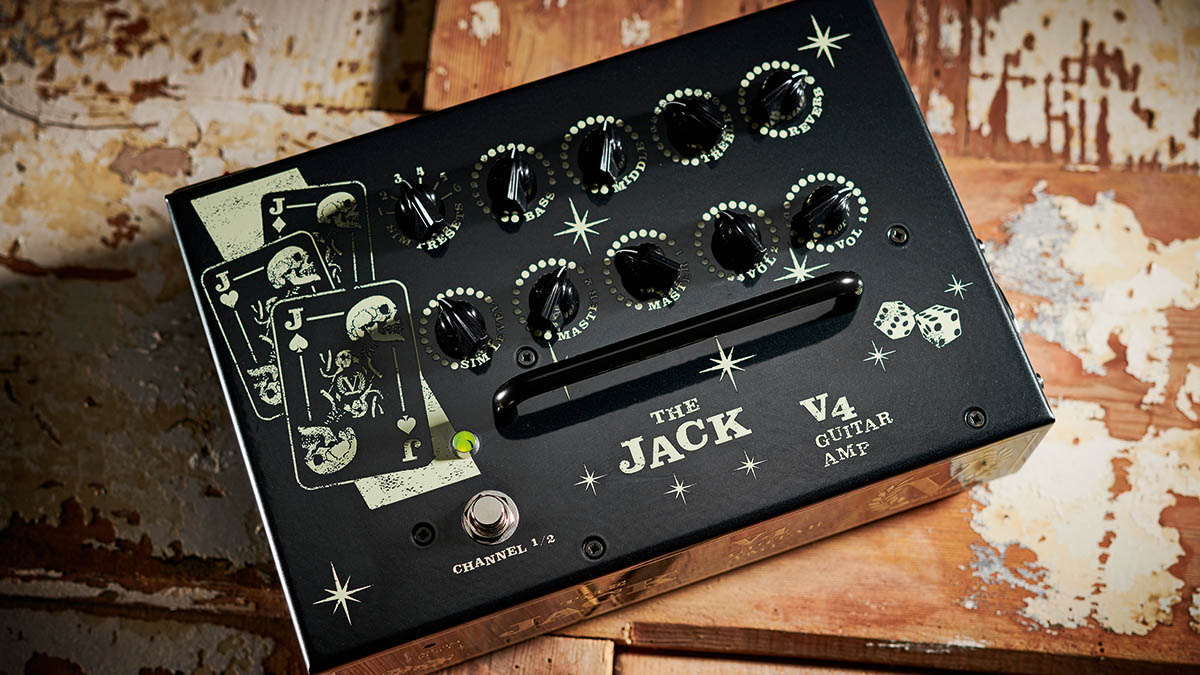Guitar World Verdict
It’s a powerhouse of killer rock guitar tone you can throw into a gigbag and take anywhere at a moment’s notice – and, like the V4 Kraken, it’s well and truly earned our ultimate accolade.
Pros
- +
Very portable.
- +
Overdrives cover most genres.
- +
Enhanced valve warmth.
- +
Power to spare.
- +
Two Notes tech adds studio-quality cab emulation and flexibility for recording, plus quiet stage setups.
Cons
- -
Two Notes edit link is USB only.
- -
We’d rather an effects loop were footswitchable over reverb.
You can trust Guitar World
Well known for powering the backlines of guitar gods such as Guthrie Govan, Richie Kotzen and Rabea Massaad, Victory has also had considerable success in the pedalboard-sized preamp and amp niche with its award-winning V4 series.
The V4 guitar amps are intended to reproduce the tones of Victory’s full-sized heads but in more portable packages, and feature a clever valve preamp section hooked up to an ultra-compact 180-watt Class D power section, with a smooth digital reverb.
Victory recently announced three new additions to complete its V4 amp family: The Copper, The Sheriff and The Jack, the latter of which we have on test here. All three new V4 amplifiers include embedded Two Notes cabinet emulation, a headphones socket and an extra feature called the Valve Response Circuit, VRC for short. Meanwhile, the two existing V4 amps – The Duchess and The Kraken – have both been updated to include the same features as the new models.
Based on the V30 Jack head originally designed for Guthrie Govan as part of his flying rig, The Jack V4 promises to make flying with an amp even easier via its lightweight aluminium case, which is about the size of a large paperback book. Just like the other V4 amps, The Jack’s preamp uses three New Old Stock military-spec versions of the EF91 pentode valve and a single NOS EC900 triode, made by EI in the former Yugoslavia.
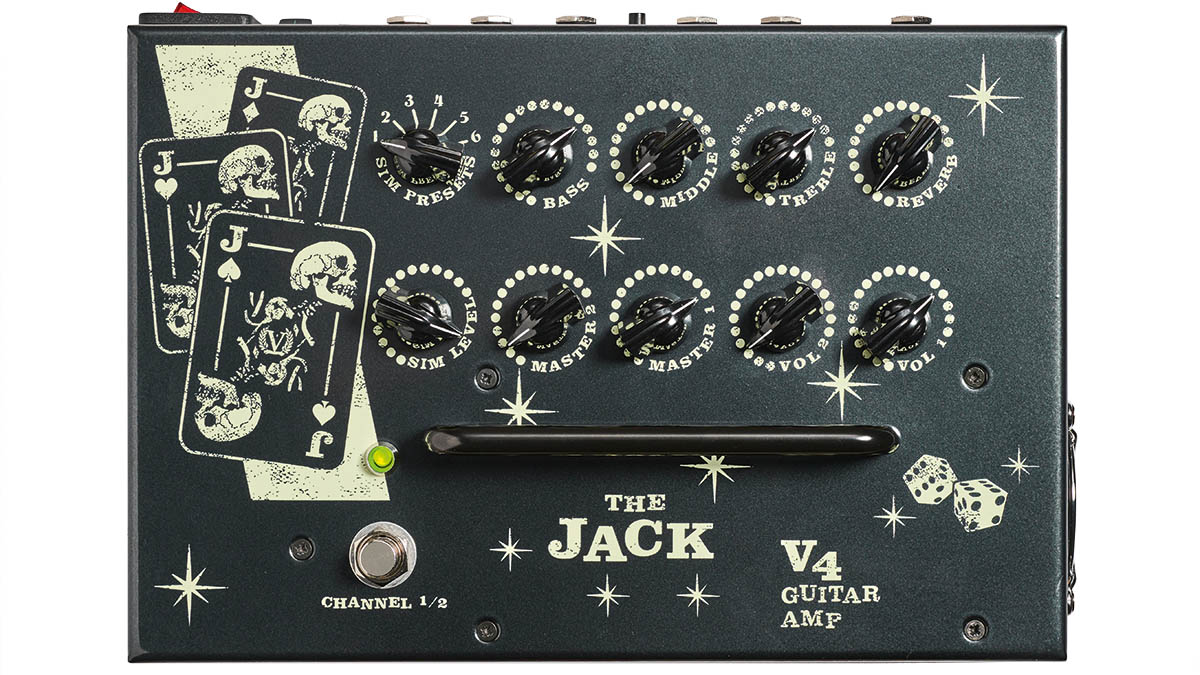
These are among the best-quality valves ever made, built to standards far exceeding current production and with useful lifetimes of several thousands of hours, allowing Victory to offer them with a unique two-year warranty. Because Victory holds large stocks of both valve types, V4 owners are also protected from current shortage issues affecting other more common valves.
The V4 Jack is smartly presented: that tough aluminium case is powder-coated in metallic dark grey, with bright graphics that will stand out on a dimly lit stage. The internal construction is typical Victory and boasts neat wiring connecting robust circuit boards and quality components. There’s a large L-shaped main PCB, with a separate board for the power supply, and the Two Notes cabinet sim technology riding piggyback on another smaller board.
The valves are mounted horizontally on another daughter board that has foam pads acting as shock protection. On our sample, the three EF91 pentodes are labelled as CV5377s, while other V4 amps we’ve looked at previously had CV4014s.
Both types are NOS ultra-high-spec military versions, the CV5377 being an even longer life version originally spec’d in 1964 by the GPO when the Post Office was responsible for Britain’s telecoms. It’s also worth mentioning here that all four of the V4’s valves use the seven-pin B7G base, which isn’t interchangeable with the more common nine-pin base found on 12AX7s and EL84s.
The Jack is a two-channel design, featuring separate preamp gains and master volumes with a shared EQ. The top row of knobs includes a six-position rotary switch to select the onboard Two Notes cab simulations, which were specially created for this amp by Victory artist Jack Gardiner.
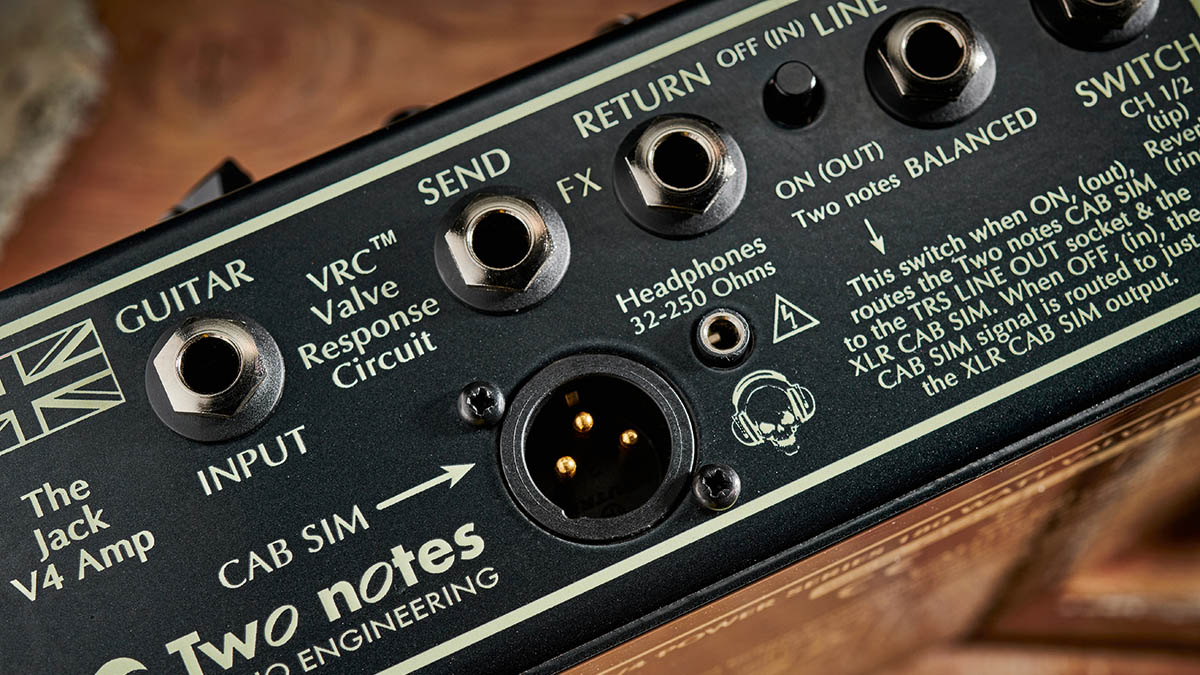
Following on, there are familiar controls for Bass, Middle and Treble, with a level control for The Jack’s digital reverb. The lower row includes a volume control for the Two Notes cab sim, with two pairs of preamp gains and master volumes for The Jack’s clean and drive channels.
The feature-rich rear panel is home to a series effects loop, TRS jack and balanced XLR line outs, a headphones socket and a single speaker outlet, which produces 180 watts into a four-ohm load and roughly 90 watts into an eight-ohm load.
There’s also a socket for an optional two-button footswitch that changes channels and toggles the reverb effect, together with a nine-volt DC outlet rated at 500mA for powering external pedals, and an on/off switch for The Jack’s integral fan.
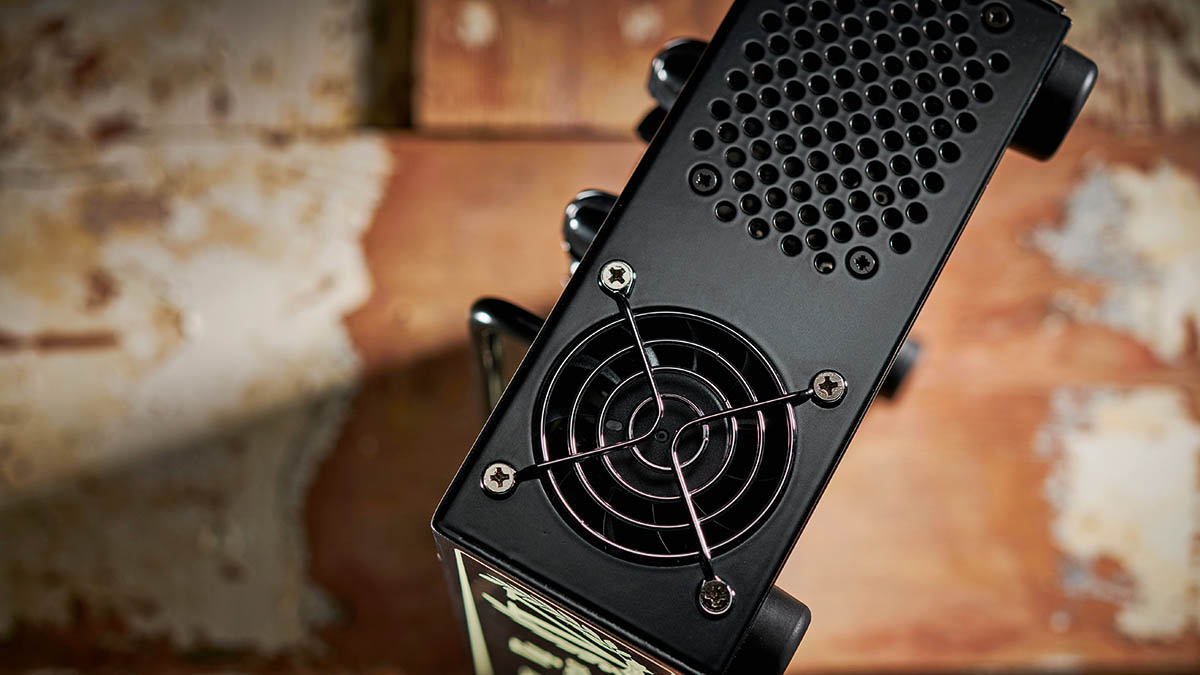
Access to The Jack’s embedded Two Notes cabinet emulations is via a USB socket on the side of the enclosure, which needs to be connected to a desktop running the Torpedo Remote app. This lets you get to all 10 of The Jack’s custom-designed emulation patches and edit them to your own taste.
There’s also a handy Two Notes reset button on the front of the enclosure. A single top-mounted footswitch toggles between The Jack’s two channels, with a colour-changing LED indicating which channel is active – green for clean and red for mean.
Feel & Sounds
The V4 Jack sits between The Kraken’s more extreme high-gain tones and the big, clean sounds of The Duchess, with an overall vibe that evokes supercharged Fender Tweed. We tried out The Jack V4 with our regular test guitars: a Strat loaded with lowish-gain Alnico Pro single coils and a Les Paul fitted with a pair of old PAFs.
We love Channel 1’s clean voicing – it’s smooth and warm with just the right amount of high-end snap. Turning this channel’s gain control past the 12 o’clock mark progressively adds a subtle overdrive effect that’s great for old-school blues and early 70s classic rock, especially when driven from a decent PAF-type humbucker.
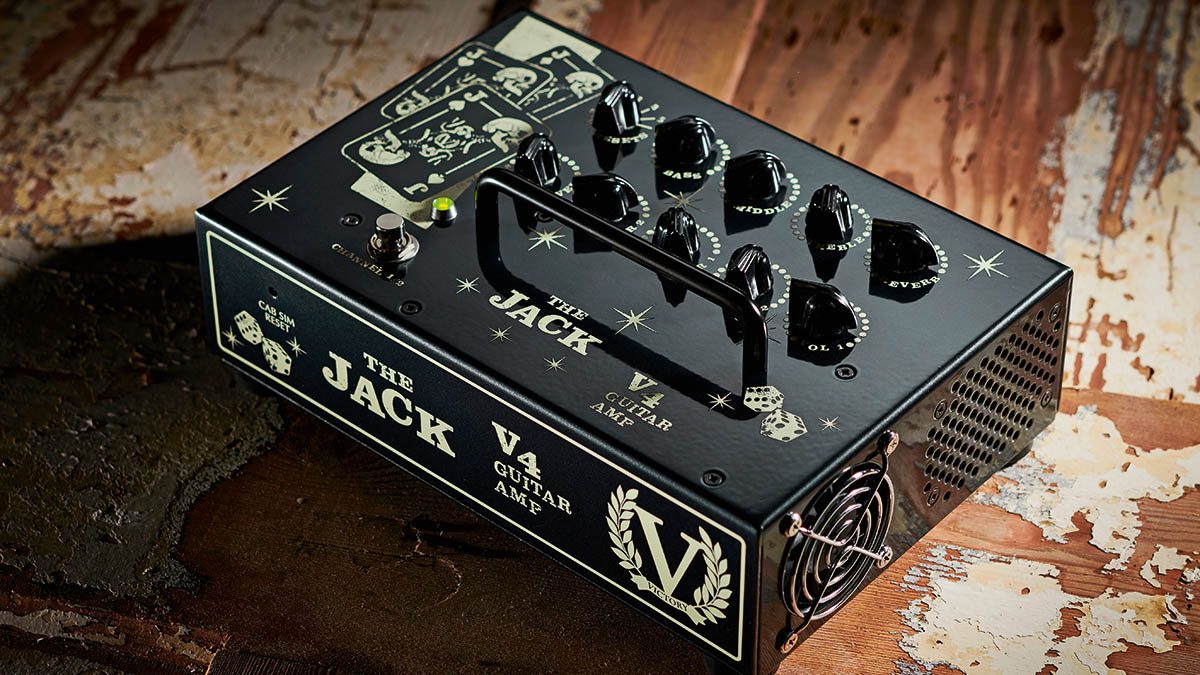
Channel 2 takes over from the point where Channel 1 is maxed out, with a ton of gain to make even the weediest of single coils sing, staying dynamic and responsive even at full tilt.
With a lot of gain dialled in, it’s still easy to clean up this channel by backing off the volume control or picking with a lighter touch, then hit it hard to hear off-the-pick harmonics fly out of the speakers.
It’s here that Victory’s clever Valve Response Circuit makes a significant difference, adding the dynamic thump you almost feel – rather than hear – when plugged into a 4x12 cab.
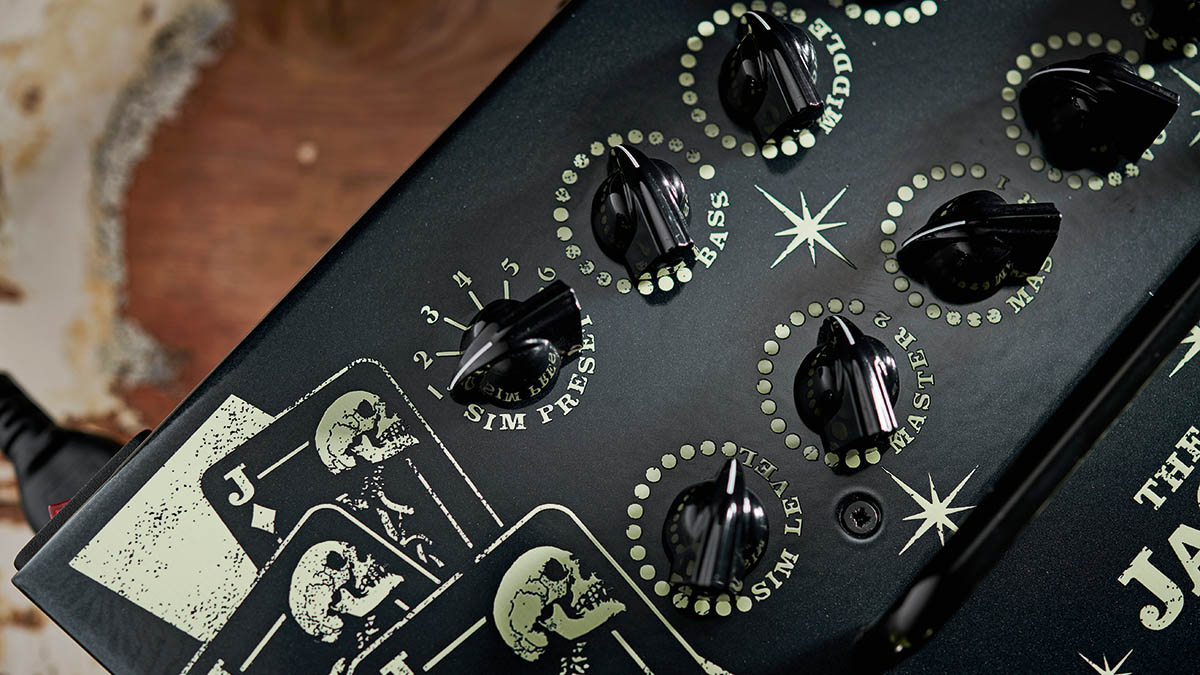
The Two Notes cabinet emulation sounds as good as its beautifully-rendered artwork looks in the Torpedo app, providing highly realistic and impressively natural-sounding emulations direct to DAW or PA.
There are 10 different Victory cab sims to play with, of which six are pre-loaded into The Jack, and you can play with the settings in the Torpedo Remote app to fine-tune your favourite mix of cabinet, microphone and ambience.
Verdict
Here’s another brilliant addition to the V4 amp range. It’s versatile enough to carry off any gig, from jazz to country, blues to modern instrumental rock and more.
With a couple of suitable eight-ohm neodymium loudspeakers wired in parallel you’ve got a highly portable rig that can unleash The Jack’s full 180 watts for huge headroom and presence on any stage, although with just one eight-ohm speaker running at 90-ish watts it’s still very impressive, especially with the Two Notes sim output plugged into the PA.
The integrated cab emulation also ticks the boxes for modern quiet stage environments and recording, especially now the V4 amps have a headphones socket. The remote footswitch socket means you can choose the configuration that works best for you, either running the V4 in a pedalboard or on top of a speaker cab.
The second button on the TRS footswitch is used to toggle the built-in reverb. While we think it would be better employed switching the series effects loop, this one tiny moan doesn’t detract at all from The Jack’s awesome capacity for sonic gratification.
It’s a powerhouse of killer rock guitar tone you can throw into a gigbag and take anywhere at a moment’s notice – and, like the V4 Kraken, it’s well and truly earned our ultimate accolade.
Specs
- PRICE: $999 / £799
- ORIGIN: UK
- TYPE: Valve preamp, Class D power amp
- OUTPUT: 180W RMS into 4 ohms, approx. 90W into 8 ohms
- VALVES: 1x EC900 triode, 3x CV4014/CV5377 (EF91) pentode
- DIMENSIONS: 258 (w) x 174 (d) x 105mm (h)
- WEIGHT (kg/lb): 1.7/3.6
- CABINET: Aluminium
- CHANNELS: 2, footswitchable from top panel or any standard remote switch
- CONTROLS: Gain 1, Gain 2, Master 1, Master 2, bass, middle, treble, reverb level, 6-position cab sim preset select, cab sim output level
- FOOTSWITCH: 1-button footswitch toggles channels, external 2-button switch (not supplied) toggles channels and reverb
- ADDITIONAL FEATURES: Series effects loop, digital reverb, balanced line out, 9V DC power outlet, integrated Two Notes Torpedo cabinet simulation with balanced XLR cab sim out
- RANGE OPTIONS: The full V4 180W amp range includes the tremolo-equipped The Duchess, the Bletchley-inspired The Sheriff, the Dartford-inspired The Copper, and the multi-layered high-gain overdrive of The Kraken (all £799)
- CONTACT: Victory Amplification
Nick Guppy was Guitarist magazine's amp guru for over 20 years. He built his first valve amplifier at the age of 12 and bought, sold and restored many more, with a particular interest in Vox, Selmer, Orange and tweed-era Fenders, alongside Riveras and Mark Series Boogies. When wielding a guitar instead of soldering iron, he enjoyed a diverse musical career playing all over the UK, including occasional stints with theatre groups, orchestras and big bands as well as power trios and tributes. He passed away suddenly in April 2024, leaving a legacy of amplifier wisdom behind him.
“If you’ve ever wondered what unobtanium looks like in amp form, this is it”: Played and revered by Stevie Ray Vaughan, Carlos Santana, and John Mayer, Dumble amps have an almost mythical reputation. But what's all the fuss really about?
“For the price, it’s pretty much unbeatable”: Harley Benton JAMster Guitar review
